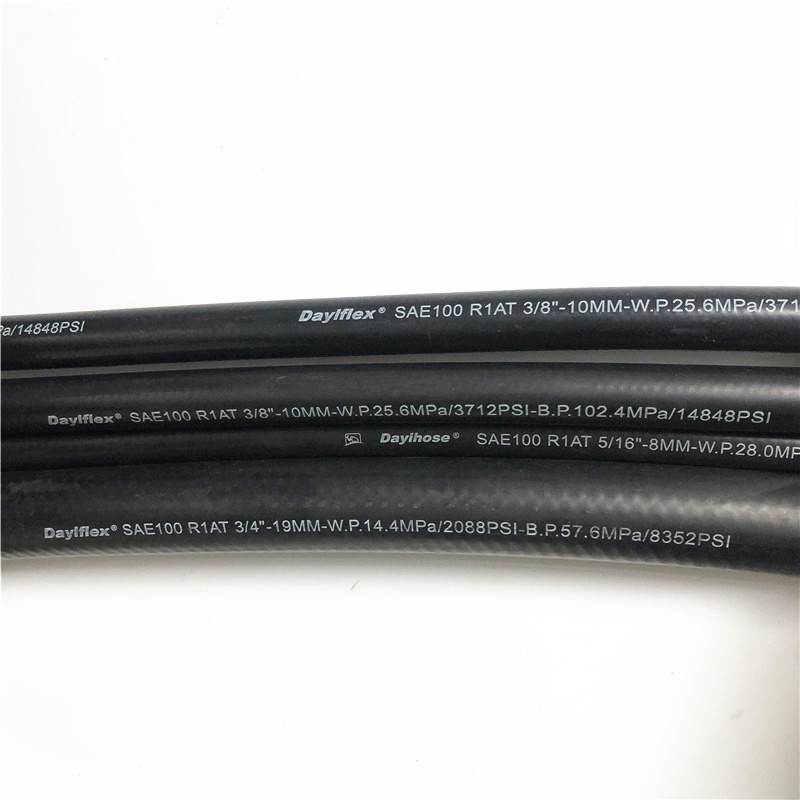335345435
Th10 . 02, 2024 19:20 Back to list
Durable Low Pressure Hose Solutions for Efficient Fluid Transfer and Management
Understanding Low Pressure Hoses Applications, Advantages, and Maintenance
In various industrial and commercial sectors, low pressure hoses play a crucial role in the transfer of fluids, gases, and other materials. Unlike high-pressure hoses that are designed for extreme conditions, low pressure hoses operate effectively at lower pressures, making them suitable for a variety of applications. This article will delve into the nature of low pressure hoses, their specific applications, advantages, and maintenance tips.
What Are Low Pressure Hoses?
Low pressure hoses are flexible tubes designed to transport liquids, gases, and sometimes solids at lower pressures, typically below 150 psi. They are constructed from a variety of materials, including rubber, PVC, or thermoplastic elastomers, with the inner lining designed to resist abrasion and potential chemical reactions. Their flexibility allows them to withstand bending and twisting, making them versatile tools in different environments.
Applications of Low Pressure Hoses
The applications of low pressure hoses are extensive, ranging from industrial to domestic uses. Here are some common examples
1. Agriculture In agricultural settings, low pressure hoses are often employed for irrigation systems, allowing farmers to transport water efficiently across fields. They facilitate the delivery of fertilizers and pesticides, ensuring that these substances reach plants effectively with minimal waste.
2. Automotive In the automotive industry, low pressure hoses are used in fuel systems, cooling systems, and air conditioning systems. Their ability to handle fluids under lower pressures makes them an ideal choice for systems that require flexibility and resistance to temperature fluctuations.
3. Construction Construction equipment often relies on low pressure hoses for air supply, water delivery, and transferring materials such as cement or plaster. Their durability ensures consistent performance in demanding environments.
4. Food and Beverage Low pressure hoses used in the food and beverage industry must meet stringent health standards. These hoses ensure the safe transportation of food products, cleaning solutions, and processing liquids without contamination.
5. Marine In marine applications, low pressure hoses are essential for bilge pumping, fuel delivery, and water supply on boats and ships. Their resistance to corrosion and saltwater damage enhances their usability in a maritime setting.
Advantages of Low Pressure Hoses
Low pressure hoses offer numerous advantages that make them a preferred choice in various applications
low pressure hose

- Flexibility These hoses are designed to bend and twist, allowing for easy routing in complex layouts. This flexibility makes installation simpler, particularly in tight spaces.
- Lightweight Low pressure hoses are generally lighter than high-pressure alternatives, which can facilitate handling and reduce strain on systems or individuals tasked with moving them.
- Cost-Effective Economically, low pressure hoses are often cheaper than high-pressure hoses due to their simpler construction and the materials used. This affordability makes them accessible for a range of projects and applications.
- Ease of Maintenance Maintenance of low pressure hoses tends to be straightforward, as they are less likely to require the specialized care that high-pressure systems do. Regular inspections can help identify wear and tear before they become significant issues.
Maintenance Tips for Low Pressure Hoses
To ensure longevity and optimal performance of low pressure hoses, proper maintenance is essential. Here are some tips
1. Regular Inspections Check hoses regularly for signs of wear, such as cracks, bulges, and leaks. Early detection of problems can save time and money in repairs.
2. Proper Storage Store hoses in a cool, dry place away from direct sunlight. Excessive exposure to UV rays can degrade materials over time.
3. Clean Thoroughly After use, clean hoses to remove any sediments or residues. This prevents blockages and maintains hygiene, especially in food-related applications.
4. Avoid Overstretching While low pressure hoses are flexible, avoid overstretching them beyond their design specifications. This can cause damage and compromise the integrity.
5. Pressure Testing Periodically conduct pressure tests to ensure that hoses can handle their intended applications. This helps in identifying any potential failure points.
Conclusion
Low pressure hoses are indispensable in various industries due to their versatility and reliability. Whether in agriculture, automotive, construction, or food processing, understanding their applications and benefits can lead to better operational efficiencies. By adhering to proper maintenance practices, users can maximize the lifespan of these essential tools, ensuring they perform reliably under a range of conditions.
-
SAE 100 R17 Black Smooth Cover Hydraulic Hose
NewsMar.07,2025
-
SAE 100 R17 Black Smooth Cover Hydraulic Hose
NewsMar.07,2025
-
SAE 100 R17 Black Smooth Cover Hydraulic Hose
NewsMar.07,2025
-
SAE 100 R17 Black Smooth Cover Hydraulic Hose
NewsMar.07,2025
-
SAE 100 R17 Black Smooth Cover Hydraulic Hose
NewsMar.07,2025
-
steel wire braided hydraulic hose
NewsMar.07,2025



